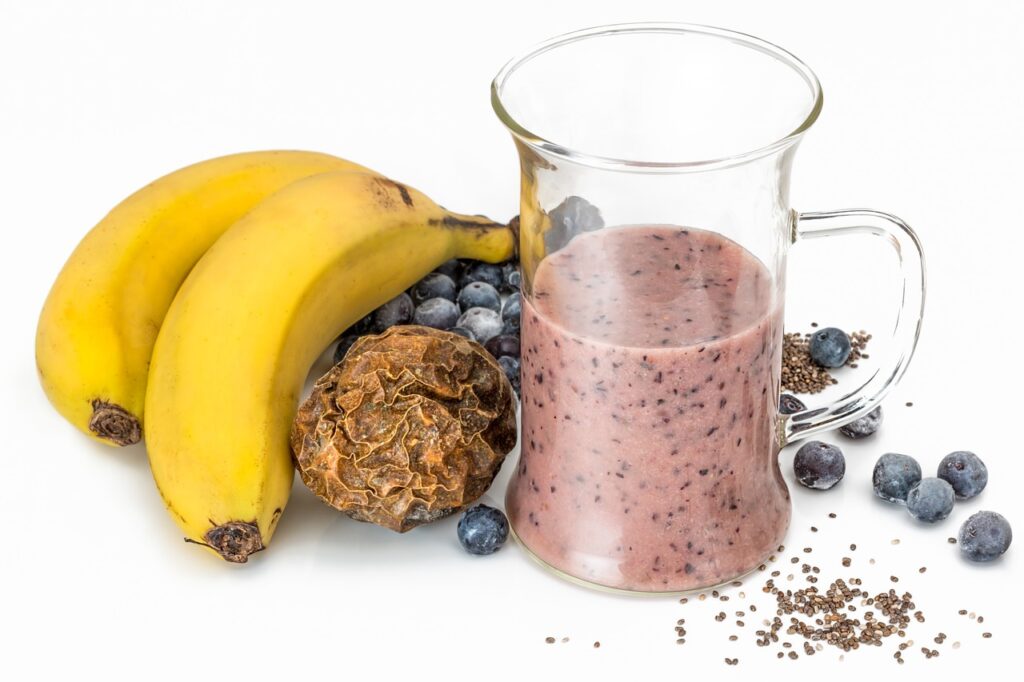
Almond milk has become a popular dairy alternative due to its nutritional profile and plant-based origin. As consumers stock up on non-perishable goods or seek to reduce waste, the question of whether almond milk can be frozen for extended shelf life often arises. Freezing almond milk is indeed possible, but it comes with certain caveats. The process can cause changes in texture and consistency due to the separation of ingredients when thawed.
When considering freezing almond milk, it’s important to understand its components and how they respond to cold temperatures. Almond milk is a water-based solution containing almond extracts, stabilizers, and sometimes added nutrients. Freezing it can preserve the milk for later use, but the end result might not be ideal for every purpose. Almond milk that has been frozen is best used in cooked or baked dishes, where the change in texture is less noticeable.
Key Takeaways
- Almond milk can be frozen but may experience changes in texture upon thawing.
- Frozen almond milk is suitable for cooked or baked recipes where texture is less critical.
- Proper storage and handling of frozen almond milk can impact its quality and shelf life.
Understanding Almond Milk Freezing Fundamentals

When considering the preservation of almond milk, freezing is a viable option that impacts its texture, taste, and nutritional value. This section explores the fundamental aspects of almond milk freezing.
Benefits and Drawbacks of Freezing
Benefits
- Extended Shelf Life: Freezing almond milk can significantly extend its usability beyond the typical fridge life.
- Convenience: Thawed almond milk is suitable for various recipes, offering convenience for future use.
Drawbacks
- Texture Changes: Post-thawing, almond milk may exhibit changes in texture due to the separation of components.
- Taste Alteration: Slight changes in taste can occur, although the nutritional value largely remains intact.
Comparing Fresh and Frozen Almond Milk
Fresh Almond Milk
- Consistency: Homogeneous and creamy.
- Taste: Optimal and typically preferred by consumers.
Frozen Almond Milk
- Consistency: Potential separation, leading to a grainy texture; shaking or blending after thawing can help.
- Taste: May slightly differ from fresh but is generally maintained.
Manufacturers often add preservatives or stabilizers to enhance the freeze-thaw stability of almond milk.
Safe Freezing Practices
Key Points for Freezing
- Airtight Container: Use an airtight container, leaving space for expansion.
- Freezing Method: A steady freezing rate in the main section of the freezer safeguards quality.
- Thawing: Thaw in the refrigerator to maintain safety and quality.
- Storage Duration: Typically, frozen almond milk is best used within a month to preserve optimal quality.
Following these practices ensures that frozen almond milk remains a safe option for extended storage.
Practical Guidelines for Freezing Almond Milk
Freezing almond milk requires careful container selection and a specific process to maintain its quality. Below are practical guidelines to effectively freeze almond milk.
Selecting Proper Containers
Choosing the right containers is crucial for freezing almond milk. It is important to use airtight containers or ziplock bags to prevent freezer burn and flavor absorption from other foods. Containers should be made of material suitable for freezing to withstand low temperatures without cracking. For those planning to thaw smaller portions, using an ice cube tray is a practical solution. The tray allows the milk to freeze in small, usable portions, making it convenient to use later.
Step-by-Step Freezing Process
When freezing almond milk, it’s important to consider expansion. Liquid expands when frozen, so leave about an inch of headspace at the top of the container to allow for this. For both homemade almond milk and store-bought almond milk, follow these steps:
- Pour the almond milk into the chosen container or ice cube trays.
- If using containers, secure the lid tightly ensuring an airtight seal.
- When utilizing ziplock bags, remove as much air as possible before sealing.
- Label containers or bags with the current date to keep track of freshness.
- Place them in the freezer at a steady temperature.
To thaw frozen almond milk, transfer it to the refrigerator allowing it to thaw slowly. Be aware that thawed almond milk might separate and change texture. If so, shake or blend to restore consistency before use. Remember, thawing in small portions is more manageable, so consider your future portion size needs when freezing.
Thawing and Utilizing Frozen Almond Milk
When using frozen almond milk, the key is to properly defrost it to retain its quality for cooking, baking, or making smoothies. This section guides you through effective defrosting techniques and how to incorporate almond milk into your recipes.
Defrosting Techniques
To thaw frozen almond milk, two main methods are recommended. The refrigerator method is the most gentle and preserves the texture best. Transfer the almond milk from the freezer to the fridge and let it defrost for several hours or overnight. This slow process helps minimize separation.
Water bath: For a quicker method, place the frozen almond milk container in a cold water bath, changing the water every 30 minutes to help it defrost more evenly.
It can be handy to freeze almond milk in ice cube trays, creating frozen almond milk cubes that can be easily thawed in smaller quantities. This is particularly useful for single servings or when the recipe calls for a small amount.
Incorporating Almond Milk in Recipes
Cooking and Baking: Once defrosted, almond milk can be used in various cooking and baking recipes. Gentle stirring is essential to ensure consistency since some separation can occur. Before adding defrosted almond milk to heated recipes, allow it to reach room temperature to avoid curdling.
Smoothies and Protein Shakes: Defrosted almond milk, especially in cube form, can be directly tossed into a blender for smoothies, like an almond milk smoothie, or protein shakes. The cubes help create a creamy, chilled beverage.
Note for bakers: For baking recipes where texture is crucial, it’s best to test with defrosted almond milk first as it may alter the final product compared to fresh almond milk.
Quality, Shelf Life, and Storage Considerations
When considering freezing almond milk, it is crucial to know how freezing affects its quality and shelf life. Proper storage methods are imperative for maintaining the product’s freshness.
Detecting Spoilage in Almond Milk
One can determine if almond milk has spoiled by checking for changes in color, smell, and texture. Fresh almond milk should have a uniform color and consistency without any separation. If the product emits sour or off odors, appears discolored, or has a thick or clumpy texture, it is likely spoiled and should not be consumed.
Understanding Expiration and Best By Dates
Almond milk packaging often includes a sell-by date, expiration date, or best by date. These dates provide guidance on how long the milk will remain at peak quality. An unopened container of almond milk typically has a longer shelf life than an opened one. Once opened, it is best to consume the milk within 7-10 days, even if the expiration date is further away. Freezing unopened, lactose-free milk can extend its usability beyond the printed date, but one should avoid refreezing it after thawing to prevent compromises in quality.
Frequently Asked Questions
When dealing with the preservation of almond milk through freezing, consumers often have several important questions regarding its storage life, packaging, and quality post-thawing.
How long does almond milk remain usable after being frozen?
Almond milk can be frozen for up to six months. However, its quality is best preserved if used within one month of freezing.
Is it possible to freeze almond milk within its original carton packaging?
Freezing almond milk in its original carton is not recommended. The milk expands when frozen, which can cause the carton to break or leak.
What is the proper method for freezing almond milk once it has been opened?
To freeze opened almond milk, pour it into an airtight container, leaving some space to allow for expansion, and seal it tightly before placing it in the freezer.
Does the consistency of almond milk change when it is frozen and then thawed?
Thawed almond milk often separates and becomes grainy or has a slight change in taste, due to the disruption of its emulsions during the freezing process.
What are some effective techniques for extending the shelf life of almond milk?
Keeping almond milk refrigerated consistently, sealed and stored away from strong-smelling foods can help maintain its freshness. Freezing is another option for extending its shelf life.
Can the texture of almond milk be restored once it has separated after freezing?
The texture of almond milk that has separated after freezing can sometimes be improved by blending or vigorously shaking it, but the original texture may not be completely restored.




